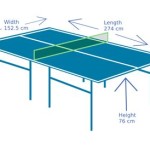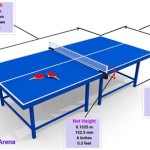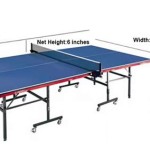Cinder Block Vegetable Garden: A Practical Guide to Vertical Gardening Success
Cinder block vegetable gardens are an innovative and space-saving way to grow fresh produce in small spaces. They are versatile, durable, and easy to customize, making them suitable for both urban and rural environments.
Benefits of Cinder Block Vegetable Gardens
Here are the key benefits of using cinder blocks for vertical gardening:
- Space-efficient: Cinder block gardens maximize vertical space, making them ideal for balconies, patios, and small yards.
- Improved drainage: The open spaces between cinder blocks allow excess water to drain away, reducing the risk of root rot.
- Flexible design: Cinder blocks can be arranged in various shapes and sizes to accommodate different gardening needs.
- Durability: Cinder blocks are weather-resistant and can withstand harsh conditions, ensuring longevity.
- Cost-effective: Cinder blocks are relatively inexpensive, making them a budget-friendly gardening option.
Materials and Setup
To set up a cinder block vegetable garden, you will need the following:
- Cinder blocks
- Soil or garden mix
- Plants or seeds
- Landscaping fabric (optional)
- Rebar or stakes (for stability)
To set up the garden, arrange the cinder blocks in the desired shape and secure them with rebar or stakes. Line the blocks with landscaping fabric to prevent weeds and retain soil moisture. Fill the blocks with soil or garden mix and plant your vegetables.
Plant Selection and Maintenance
Choose vegetables that thrive in vertical gardens, such as strawberries, tomatoes, peppers, lettuce, herbs, and beans. These plants have shallow root systems and can tolerate limited soil depth.
Water your vegetables regularly, especially during hot and dry weather. Fertilize them according to the manufacturer's instructions to ensure adequate nutrient supply.
Advantages for Small Spaces
Cinder block vegetable gardens are particularly advantageous for small spaces. Here's why:
- Vertical growth: They maximize vertical space, allowing you to grow multiple plants in a compact area.
- Minimal space requirement: The small footprint of cinder block gardens makes them suitable for balconies, patios, and narrow yards.
- Easy access: Vegetables are easy to reach and harvest, eliminating the need for bending or crawling.
Conclusion
Cinder block vegetable gardens are a smart and efficient way to grow fresh produce in limited spaces. By utilizing the vertical dimension, you can maximize your yield and enjoy the benefits of home-grown vegetables. Whether you're a seasoned gardener or a novice, a cinder block garden can provide you with a sustainable and rewarding gardening experience.

Cinder Block Raised Bed The Four Acre Farm

15 Creative Cinder Block Raised Garden Beds Club Building A Irrigation

How To Build A Cinder Block Raised Garden Bed Get Busy Gardening

Diy Cinder Block Raised Garden Bed Fab Everyday

12 Amazing Cinder Block Raised Garden Beds Off Grid World

Raised Bed Vegetable Garden Concrete Blocks Planter For Small Spaces

How To Make A Raised Bed Garden With Cinder Blocks An Artful Mom

Cinder Blocks Are An Easy Way To Build Raised Garden Beds Riverheadlocal

How To Build Rasied Beds Of Wood Cinderblocks Or Metal Here Are The Pros And Cons Each Home Garden Nola Com

20 Diy Small Garden Bed Ideas With Concrete Blocks Building A Raised Vegetable Design








